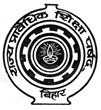바나나 가루
Banana powder바나나 파우더는 가공 바나나를 이용해 만든 가루다. 밀크셰이크와 이유식 생산의 구성 요소로 사용된다.[1][2] 다양한 종류의 케이크와 비스킷의 제조에도 사용된다.[3]
제조하다
바나나 파우더는 바나나 펄프를 이용해 형성되는데, 기계적으로 다진 뒤 콜로이드 밀을 이용해 유압전단 처리해 반죽으로 만든다. 그리고 나서 메타비설파이트 나트륨은 반죽의 노란색을 밝게 하는데 사용된다. 반죽은 건조하는 동안 어느 것도 손실되지 않기 때문에 후자가 더 흔하지만 스프레이 또는 드럼 드라이에 의해 건조된다. 드럼 건조는 또한 약 2%의 가루를 더 생산하고 더 철저하게 건조시킨다.[3][4] 건조 과정과 상관없이 바나나 가루는 일반적으로 약 1년 동안만 선반에서 신선하게 유지될 수 있다.[5]
역사
아기 분유에 바나나 분말을 사용하는 것은 1900년대 초부터 아기들의 건강을 유지하는 방법으로 널리 알려져 왔다.[6] 1916년에는 말린 바나나 "피규스"와 함께 이 기간 동안 "서인도 제도의 중요한 산업" 중 하나로 여겨지기도 했다.[7]
유나이티드 프루트 회사는 1930년대에 바나나 파우더가 주재료였던 멜조라는 이름의 제품을 생산하기 시작했다. 바나나 파우더의 유용한 특성 때문에 멜조는 "아이와 노인을 위한 건강식품, 특정한 빈곤에 대한 교정제, 정신적으로나 육체적으로 부진한 모든 사람들을 위한 활성화제"로 마케팅되었다.[2]
사용법
일반용도
바나나 가루가 '탄수화물 및 칼로리의 주요 공급원'인 것으로 나타났다. 일반적으로 단백질의 공급원으로서 낮은 반면, 분말의 유익한 성분은 여전히 "다른 과일보다 두드러지게 우수하다"[8]고 한다. 이 분말은 또한 난독증(불수증)에 대한 일반적인 치료법으로도 유용한 것으로 밝혀졌다.[9]
과학적 용법
1984년 인도 과학자들은 바나나 가루에서 발견된 '항응제 화합물'의 일부를 추출할 수 있었는데, 결국 위궤양 예방에 '300배 더 활성'한 형태의 분말을 만들어냈다.[10] 바나나 파우더는 나중에 세포 성장을 증가시키는 것으로 밝혀져 이전에 궤양이 발생했던 부위의 빠른 치유가 가능해졌다.[11]
참고 항목
참조
- ^ "The Hindu Business Line : BARC develops tech to make biscuits, baby food from banana". The Hindu. Retrieved 25 November 2010.
- ^ a b Scofield Wilson, David (1999). Rooted in America: foodlore of popular fruits and vegetables. Univ. of Tennessee Press. pp. 28–29. ISBN 9781572330535.
banana powder
- ^ a b H. Hui, Yiu; Stephanie Clark (2007). Handbook of Food Products Manufacturing: Principles, Bakery, Beverages, Cereals, Cheese, Confectionary, Fats, Fruits, and Functional Foods. Wiley-Interscience. p. 873. ISBN 9780470049648.
- ^ Food and Agriculture Organization of the United Nations (1989). Utilization of Tropical Foods: Trees. Food & Agriculture Org. pp. 33–34. ISBN 9789251027769.
- ^ Association of Food Technologists (2007). "Packaging and storage studies on spray dried ripe banana powder under ambient conditions". Journal of Food Science. 44: 16–19.
- ^ Pamphlets on Biology: Kofoid collection, Volume 147. 1900. pp. 12–15.
- ^ United States. Bureau of Manufactures (1916). Commerce reports, Volume 4. Bureau of Foreign and Domestic Commerce, United States Dept. of Commerce. p. 290.
- ^ Sri Avinashilingam Home Science College (1976). The Indian journal of nutrition and dietetics, Volume 13. Sri Avinashilingam Home Science College for Women. pp. 218–224.
- ^ Al-Achi, Antoine (2008). An introduction to botanical medicines: history, science, uses, and dangers. ABC-CLIO. p. 80. ISBN 9780313350092.
- ^ Information, Reed Business (6 September 1984). "Rats with ulcers go bananas". New Scientist: 22.
- ^ R.K. Goela; Saroj Guptab; R. Shankarc; A.K. Sanyal (1986). "Anti-ulcerogenic effect of banana powder (Musa sapientum var. paradisiaca) and its effect on mucosal resistance". Journal of Ethnopharmacology. 18 (1): 33–44. doi:10.1016/0378-8741(86)90041-3. PMID 3821133.[데드링크]
추가 읽기
- Wang, Juan; Li, Yuan Zhi; Chen, Ren Ren; Bao, Jin Yong; Yang, Gong Ming (January 2007). "Comparison of volatiles of banana powder dehydrated by vacuum belt drying, freeze-drying and air-drying". Food Chemistry. 104 (4): 1516. doi:10.1016/j.foodchem.2007.02.029.
- von Meysenbug, L.; Fine, Archie (May 1936). "Banana powder and the fecal flora of infants". The Journal of Pediatrics. 8 (5): 630. doi:10.1016/S0022-3476(36)80163-2.



